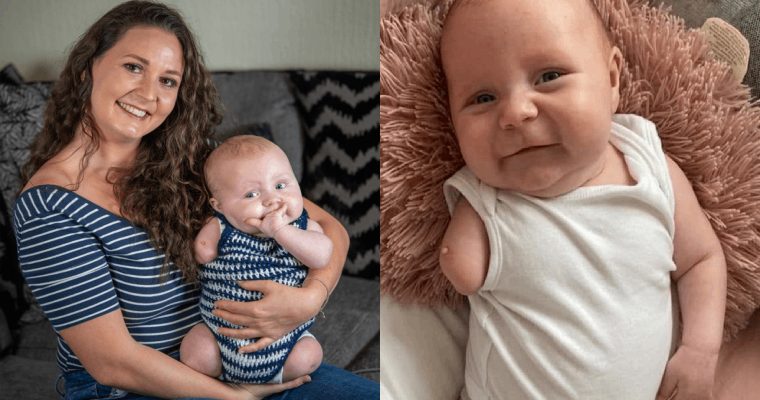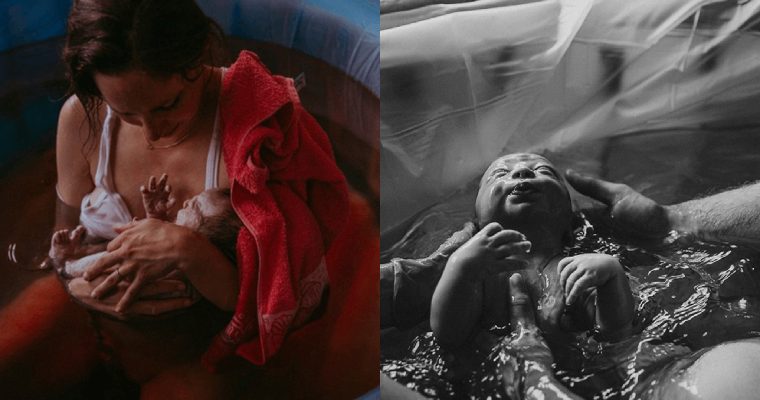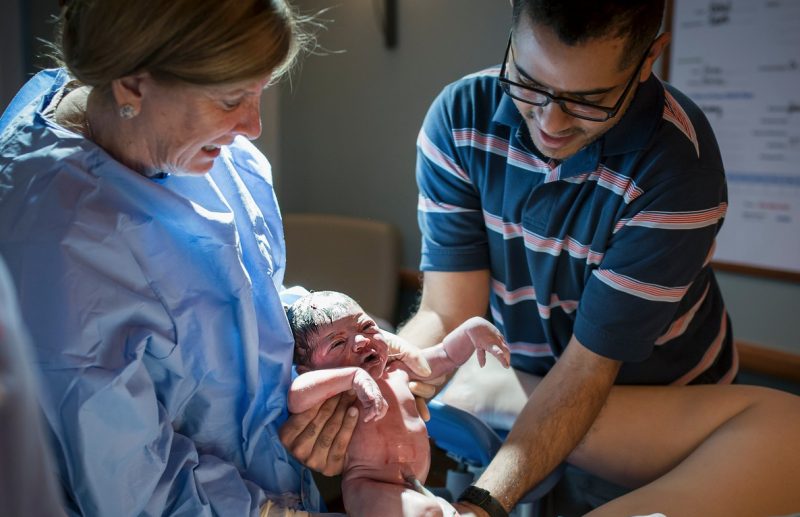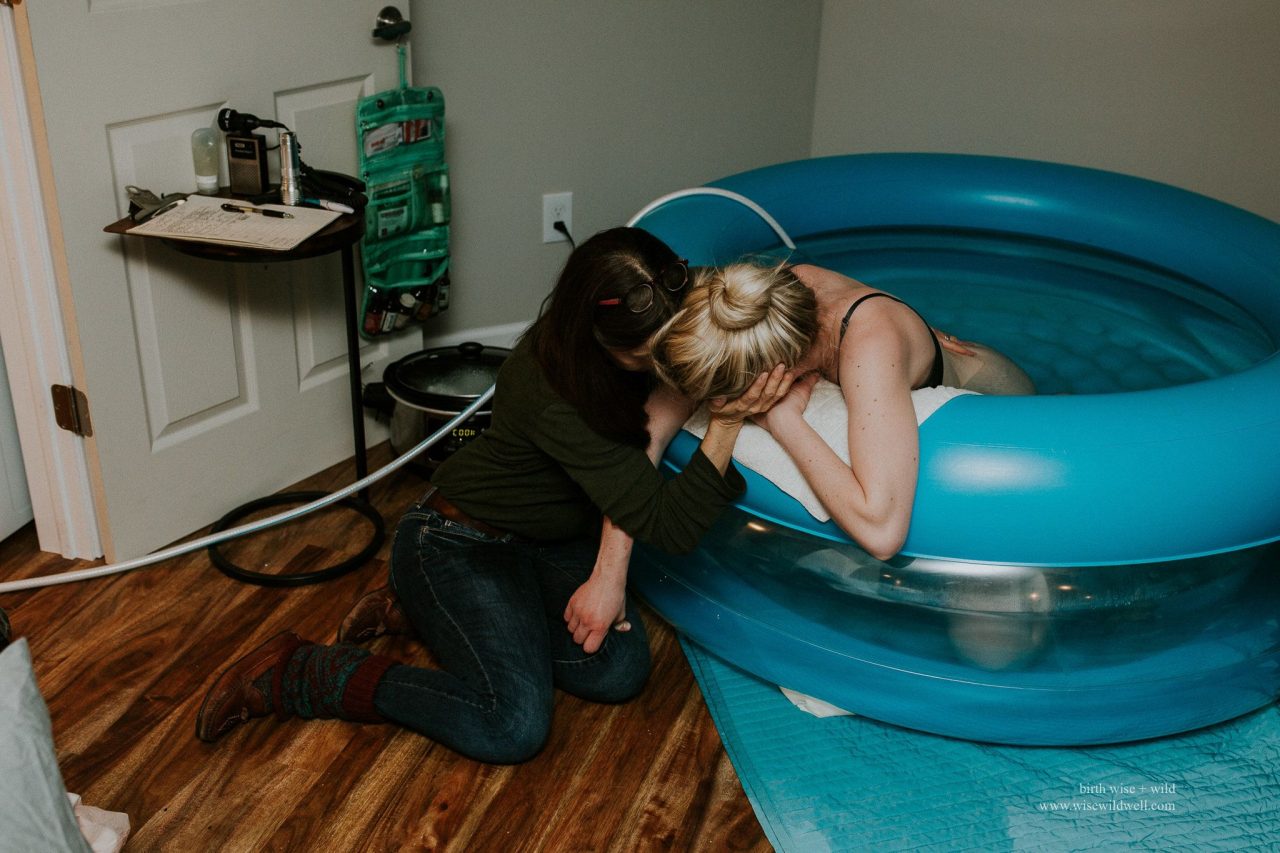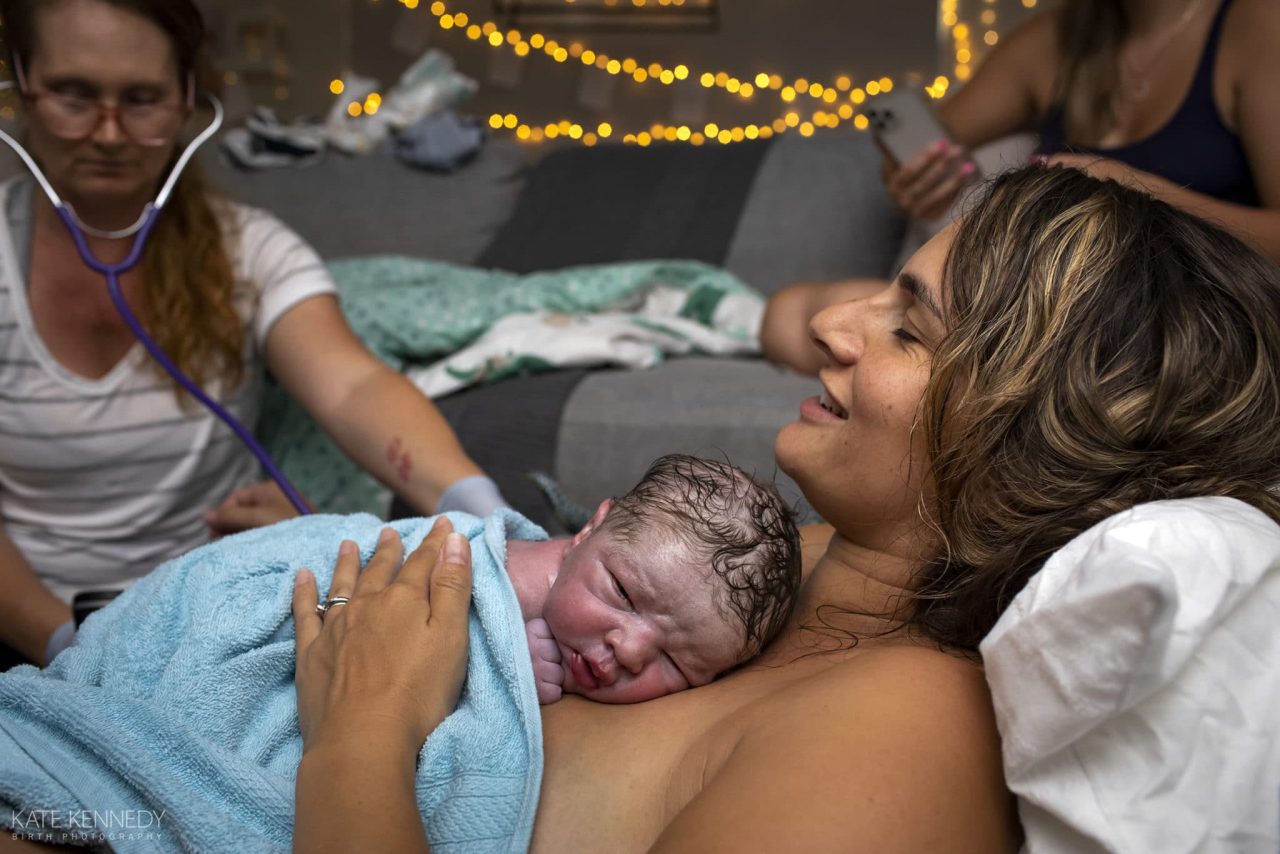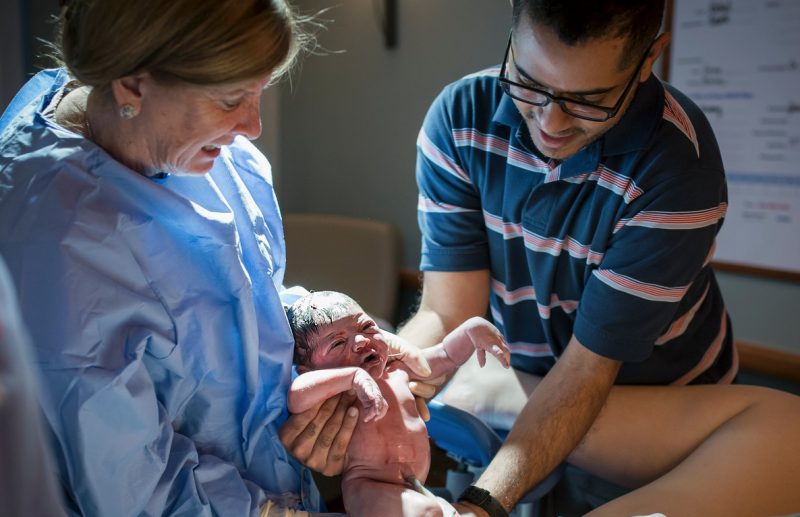A 30-year-old mom is going viral on TikTok after opening up about her high-risk pregnancy with monoamniotic-monochorionic twins.
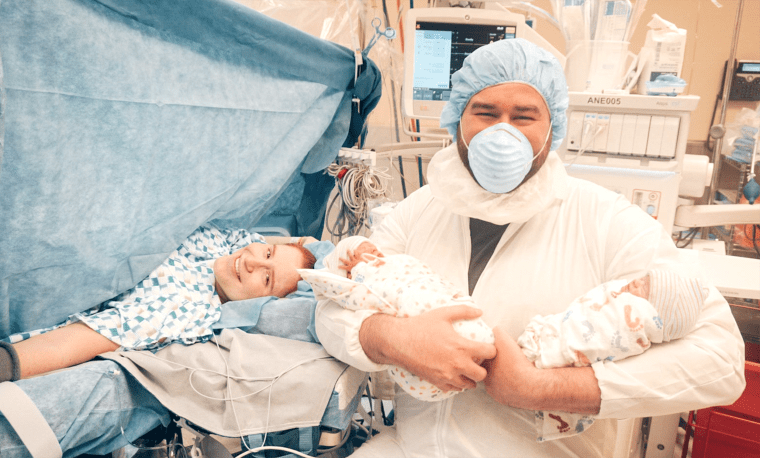
Courtesy Lex Ginger
A 30-year-old mother recently went viral on TikTok for sharing the story behind her incredibly rare type of twins.
In the video, which has garnered over 20 million views and 8,000 comments, user @Lex.Ginger plays the “Put a finger down if you …” challenge to describe how she found out she was pregnant with identical twins who shared the same amniotic sac and placenta — a condition known as monoamniotic twins, or “mono mono” for short. Lex — who didn’t want her last name disclosed to protect her and her family’s privacy after going viral — shared her story to raise awareness and connect with other mothers trying to navigate their high-risk pregnancies.
Lex is an immigration attorney who lives in Florida with her husband and her twin boys. Although she originally shared the story of her high-risk pregnancy on TikTok in March 2021, her most recent mono mono twin video took her story to new heights.
Lex’s mono mono twins ultrasound
In December 2018, Lex found out she was pregnant. It was a surprise given her preexisting conditions, which can affect fertility. “I had been told that it would be very difficult to get pregnant because I have PCOS, polycystic ovary syndrome and factor V, which is a blood clotting disorder,” Lex told TODAY. She and her husband were elated to be expecting.
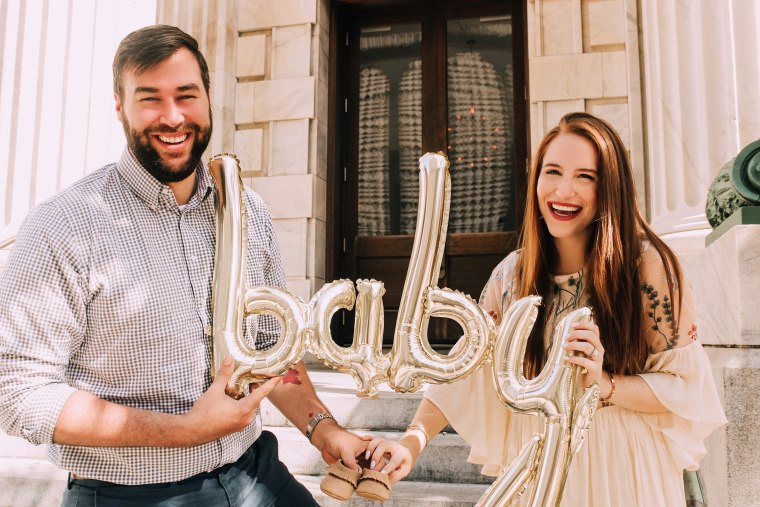
When Lex told her husband she was pregnantCourtesy Lex Ginger
Lex had her first ultrasound appointment at six weeks. On the scan, it was clear that there was one yolk sac, which provides the embryo nutrients during early pregnancy until the placenta forms. “There appeared to be one baby,” Lex recalled. Her doctor was surprised by the strong cardiac activity she heard, but because everything else seemed normal, it was chalked it up to a healthy pregnancy.
One week later, about seven weeks along in her pregnancy, Lex woke up with debilitating morning sickness. “I couldn’t get out of bed. I couldn’t eat or drink water,” she said. It wouldn’t go away, and it turned out she was suffering from hyperemesis gravidarum, severe and persistent nausea and vomiting during pregnancy.
Lex’s OB-GYN prescribed her medication and asked her to pick it up in-person at the clinic so they could take a look at her just in case. Anticipating a short and uneventful appointment, Lex told her husband he did not need to join and should head to work. Spoiler alert: He never missed another appointment after this one.
When she arrived at the clinic, Lex said her OB-GYN was alarmed by how sick she looked and asked to do a quick ultrasound to make sure everything was OK. That’s when things took a turn that neither Lex, nor her OB-GYN, had ever expected.
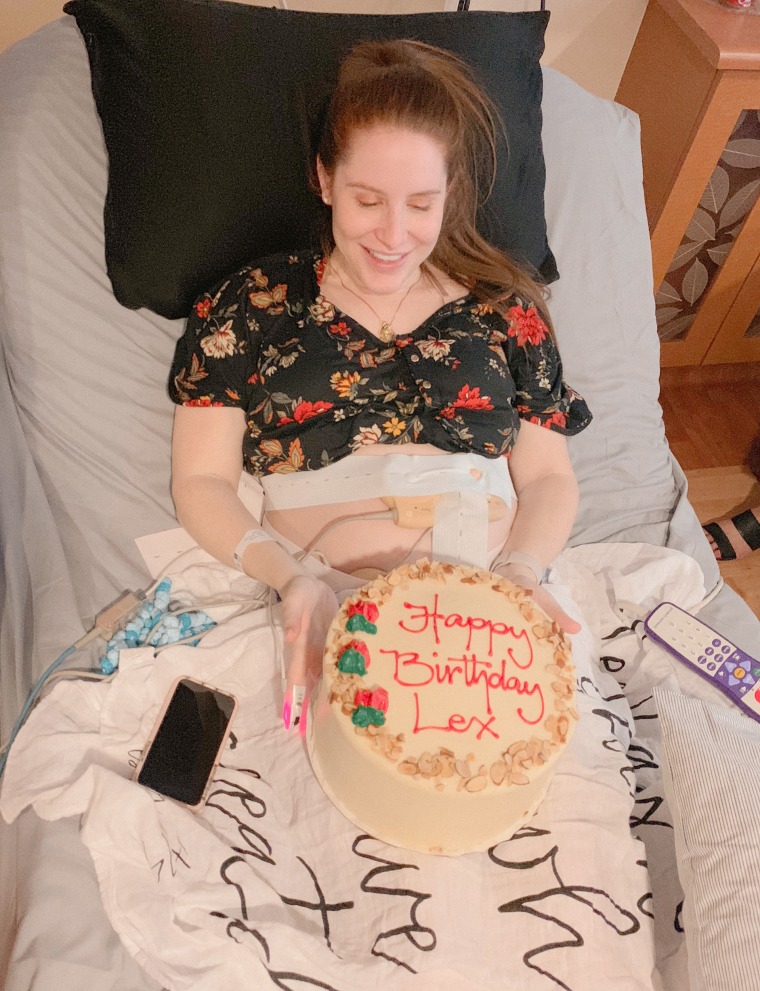
Lex pregnant with mono mono twinsCourtesy Lex Ginger
“The ultrasound was taking a very long time,” Lex said. After a few minutes, the OB-GYN asked Lex if she knew that she was having twins. “I said, ‘No, I’m not because I had just been there the week before and I have one yolk sac.’ … And she said, ‘Yes, you are,’” Lex recalled. The OB-GYN then showed her the ultrasound, which Lex said looked like two little beans with flickering spots in the center.
The strong cardiac activity detected at six weeks was actually from two embryos right on top of each other.
Lex experienced a range of emotions — from feeling unprepared to be a mom of two at 26 to grateful to be pregnant with twins after expecting fertility issues. But then her OB-GYN went quiet and kept moving the ultrasound probe around her belly. “I noticed they were so close together, so I asked if they were conjoined, and she said they might be,” Lex said.
Not only was Lex alone, but she had also forgotten her phone so she was unable to reach her husband. “I was freaked out. It felt like a bad dream,” she said. Her OB-GYN then called in an ultrasound technician to take a look, who told Lex that based on how close they are, the twins were most likely either mono mono or conjoined.

Lex’s twinsCourtesy Lex Ginger
Lex had never heard of mono mono twins before. “I asked my OB-GYN how many times she had seen this, and she said never,” Lex said. It was quite literally something out of a medical textbook.
What are mono mono twins?
Monoamniotic-monochorionic twins are identical twins who are in the same amniotic sac and share a placenta, Dr. Mauro Schenone, board-certified maternal fetal medicine specialist at the Mayo Clinic in Minnesota, who did not treat Lex, told TODAY.
“We categorize twins by zygosity, so whether or not they come from the same fertilized egg,” Schenone said. Monozygotic, aka identical twins, occur when a fertilized egg splits in two, and dizygotic, aka fraternal twins, come from two separate, fertilized eggs. Then, there are three more categories of twins, said Schenone.
Dichorionic-Diamniotic (Di-Di): Each twin has their own amniotic sac and their own placenta, just like a singleton baby. These can be either fraternal or identical.
Monochorionic-Diamniotic (Mono-Di): Each twin has their own amniotic sac, but they share the placenta. This is only possible with identical twins.
Monochorionic-Monoamniotic (Mono-Mono): Both twins share the same amniotic sac and the same placenta. These twins are always identical and can be conjoined. This is the rarest, making up less than .1% of all pregnancies, according to Columbia University.
How do identical twins end up in these different configurations? The theory is it depends on how many days after fertilization the fertilized egg splits, Schenone explained.
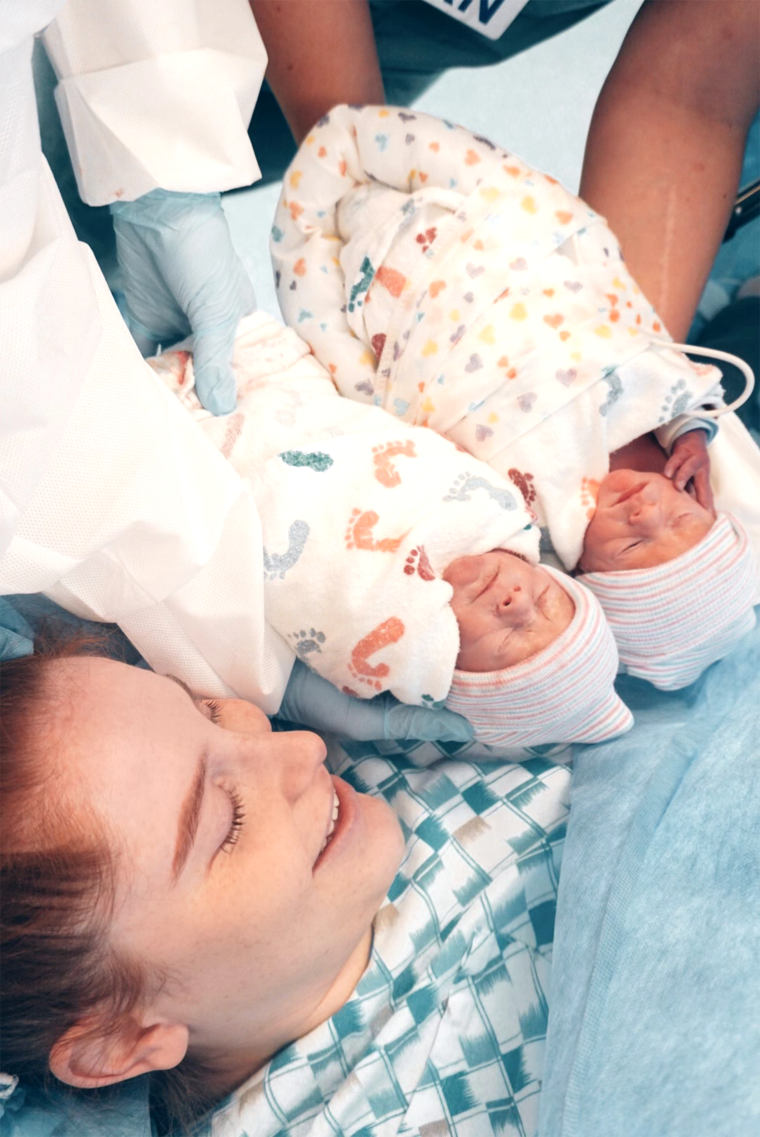
Lex and her twin boysCourtesy Lex Ginger
“If they split within the first three days, you end up with two placentas and two sacs (di-di). If they split between day four and eight, then you have one placenta and two sacs (mono-di). If they split between day eight and 12, they will share a placenta and a sac (mono-mono),” Schenone said. If the egg splits after 13 days, you can end up with conjoined twins, he added.
Most studies estimate that, of the mono mono twins that make it to the second trimester, 12 to 23% will die during the remainder of the pregnancy or first month of life, Schenone said.
The most common cause of death in mono mono twins is umbilical cord entanglement. As Lex was told by her doctors, it can happen at any point during a mono mono pregnancy up until the day of birth.
Early care and monitoring increase the chances of mono mono twins’ survival. Most patients pregnant with mono mono twins will be hospitalized by the time they hit 28 weeks, which helps prevent cord entanglement. Mono mono twins are usually delivered between 32 and 34 weeks and always by Cesarean section because of the risk of cord entanglement during birth, Schenone said.
“Only a 50% chance we’ll make it past 12 weeks”
All conjoined twins are mono mono, but not all mono mono twins are conjoined. So at that same appointment, Lex underwent a type of ultrasound that uses sound waves to assess blood circulation in the fetus. “There (was) very much two separate blood flows,” Lex said, which indicated the embryos were not conjoined. But it was too early to be sure. She had to wait until her 14-week ultrasound to confirm the twins were mono mono but not conjoined.
“Then (the doctor) gives the kicker: There’s only a 50% chance we’ll make it to 12 weeks,” Lex said.
“I couldn’t see a maternal-fetal medicine specialist before 14 weeks because there’s nothing really they could do,” Lex said. In the meantime, her OB-GYN asked her to come in every week for what’s called a “demise check” to make sure the babies were still alive.
“I was very depressed,” Lex said.
She made it past 14 weeks, at which point doctors confirmed it was a mono mono pregnancy and she was having boys. Thanks to her therapist, her mental health had also improved by that time.
“If you can get therapy, get it because that made a world of a difference and helped me reframe things,” she said. “It also helps that my husband is just an uncannily positive person.”
“High-risk pregnancies take your plan and vision completely out of your hands,” she added.
Lex distracted herself for the remainder of her pregnancy before being hospitalized by studying for the Florida state bar exam. She also joined a mono mono mom Facebook group, where she could ask questions and share her experiences with about 2,000 other moms who went through the same thing.
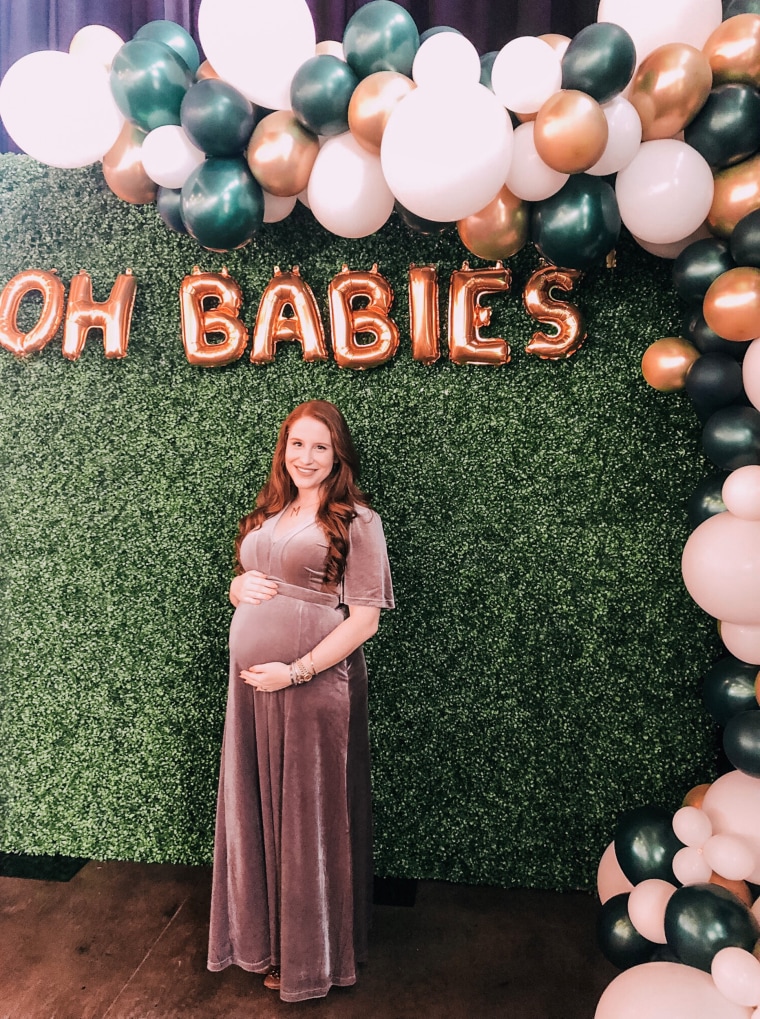
Lex and her baby showerCourtesy Lex Ginger
At 22 weeks, Lex had an early baby shower, but she said it took some convincing on her husband’s part. “When you have a high-risk pregnancy, it’s very scary to celebrate the milestones,” she explained.
At 25 weeks, Lex was admitted to Tampa General Hospital, where she was monitored day and night by a team of maternal-fetal medicine specialists, OB-GYNs, residents and nurses.
“There (was) a little machine next to me where I (could) hear their heartbeats, which (was) very comforting and warm,” she recalled.
Lex spent most of her time resting, walking around the ward or treating herself with a trip to the hospital Starbucks if the twins were doing well. She got advice on how to stay sane and relieve back aches from the mono mono mom Facebook group.
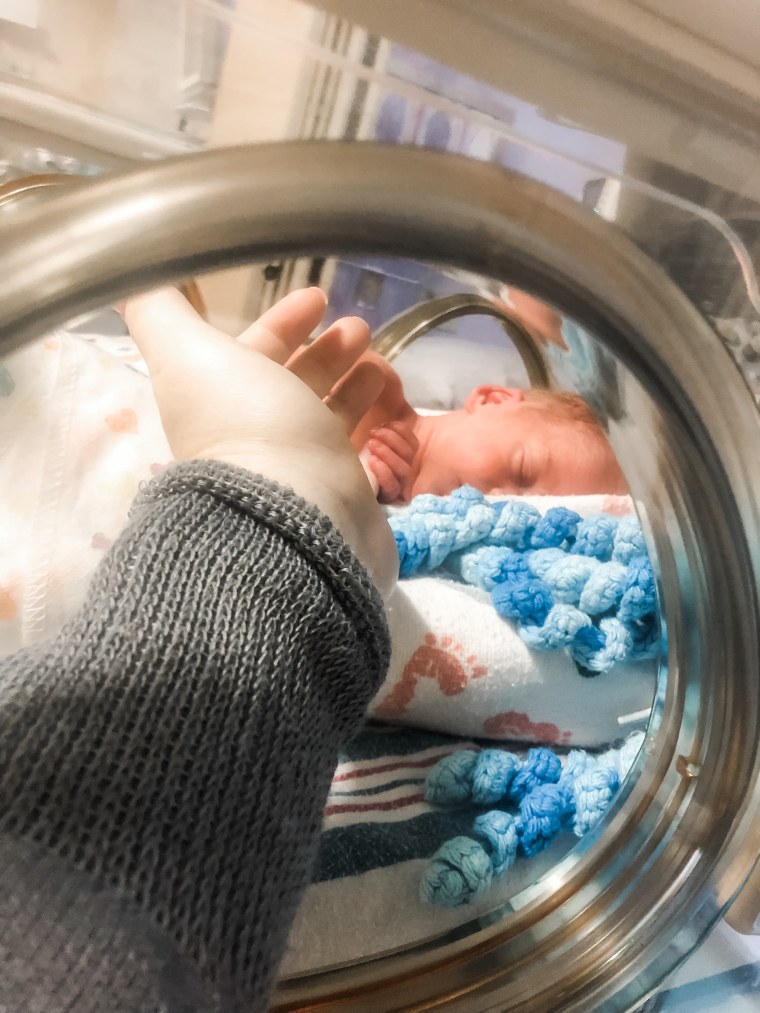
Lex’s twins had to stay in the NICU for 30 daysCourtesy Lex Ginger
Other than two “twin demise” scares, where one baby was hiding behind the other so the monitor didn’t pick up a heartbeat, Lex said the pregnancy was uneventful — except for one other moment.
A few weeks before her scheduled C-section date, she learned she passed the bar, which she took before being admitted to the hospital. So she got dressed up and had the swearing-in ceremony from her hospital room. “I got sworn in as an attorney in the maternity ward, which I think is pretty rad,” she quipped.
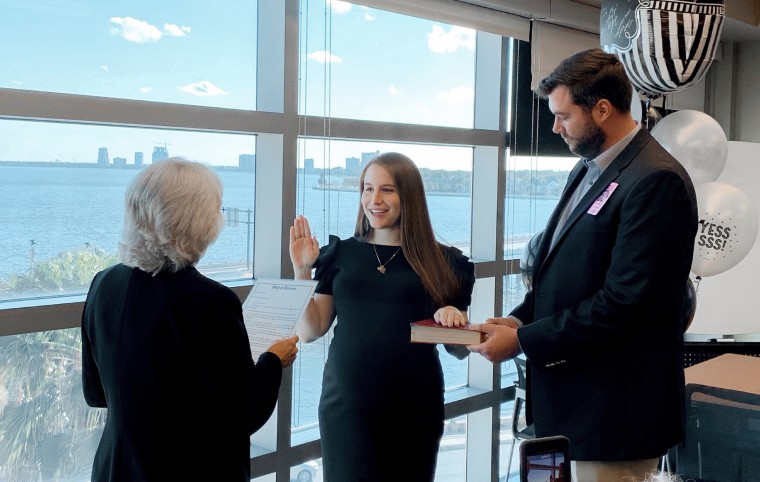
Courtesy Lex Ginger
At 32 weeks, she went in for her planned C-section. “There was just a sense of elation in the air, like we made it,” Lex recalled. Greeting Lex in the operating room was her favorite team of providers.
On May 16, 2019, Lex gave birth to two healthy, screaming baby boys within 15 seconds of one another. “They had an Apgar score of nine out of 10, so they were fabulous,” said Lex. After the twins spent 30 days in the neonatal intensive care unit training their suck–swallow–breathe reflexes, Lex and her husband were able to take their mono-mono twins home.
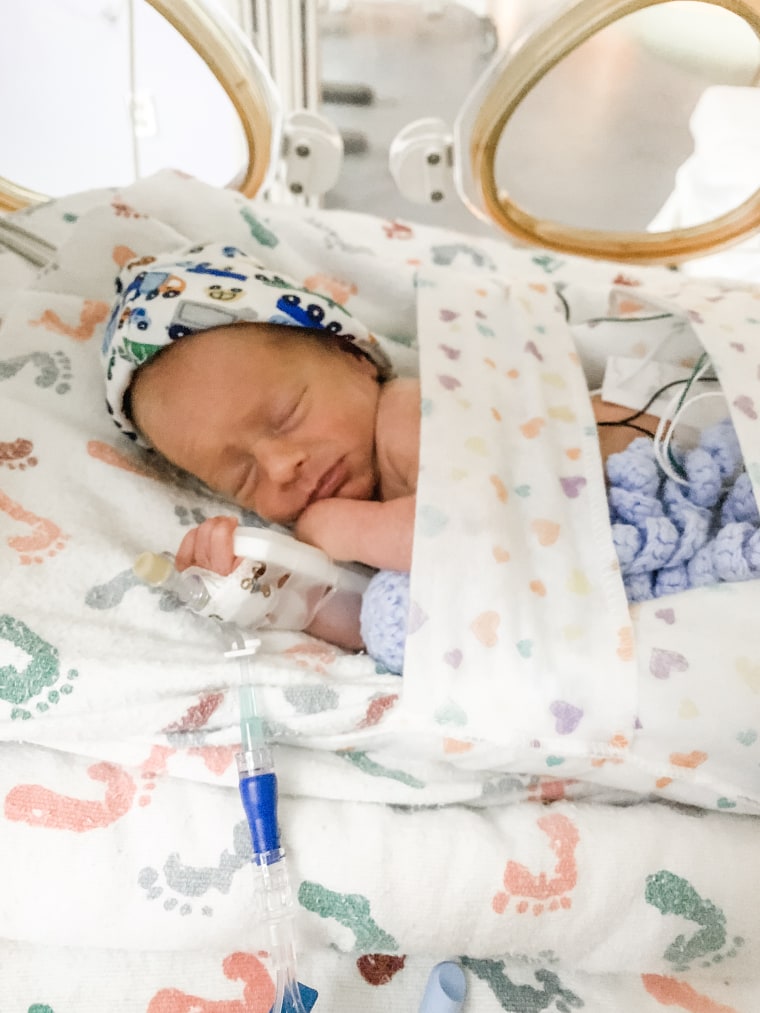
One of Lex’s sons in the NICUCourtesy Lex Ginger
“Once they are out and healthy, the mono mono part of it is not relevant anymore,” Lex said. Her sons are just happy, healthy 3-year-olds.
There are no telltale symptoms of a mono mono twin pregnancy, but there are some early signs that may suggest a twin pregnancy. Hyperemesis gravidarus, the severe morning sickness Lex had, “is more common in women who are pregnant with twins or more,” according to Stanford Children’s Health.
Schenone advises patients pregnant with twins start prenatal care as soon as possible and be proactive. “Ask your providers: Do my twins share either the placenta or an amniotic sac? Because again, these are managed very differently,” he said.
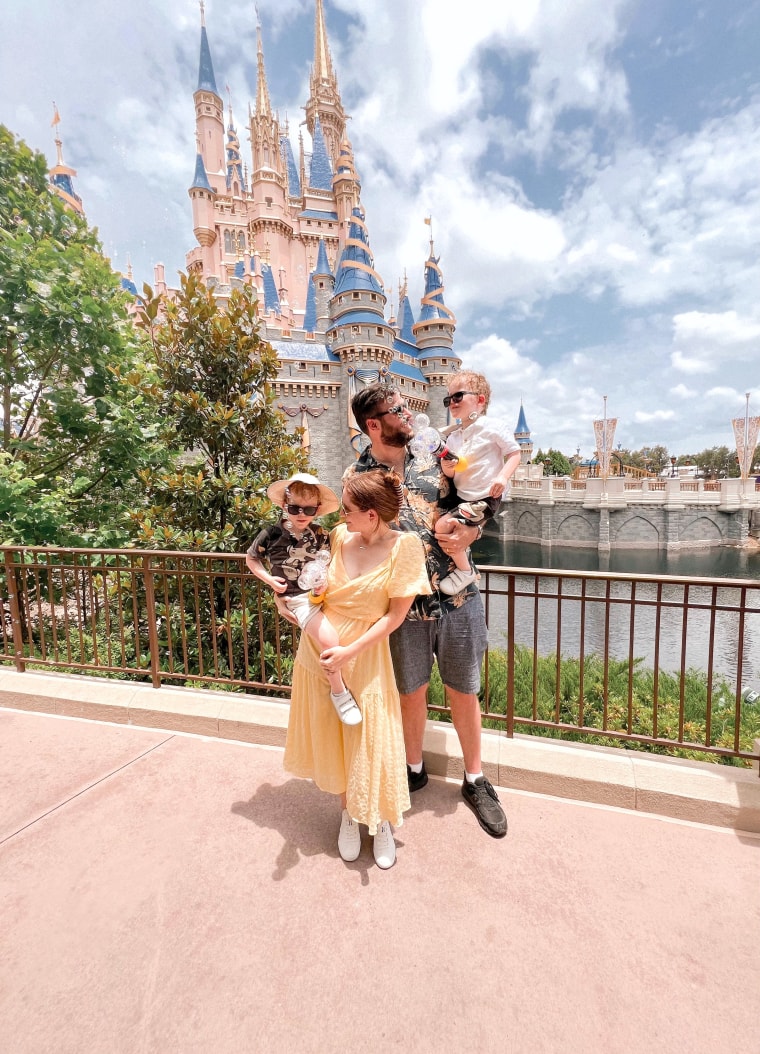
Lex and her familyCourtesy Lex Ginger
Lex, who has connected through social media with many expecting twin moms feeling scared or alone, also offered some advice: “Stay off Google, get a therapist if you’re able to, and to try to stay as positive as possible.”
Reach out to your primary care provider or OB-GYN if you have any questions about your individual pregnancy.
Source: today



